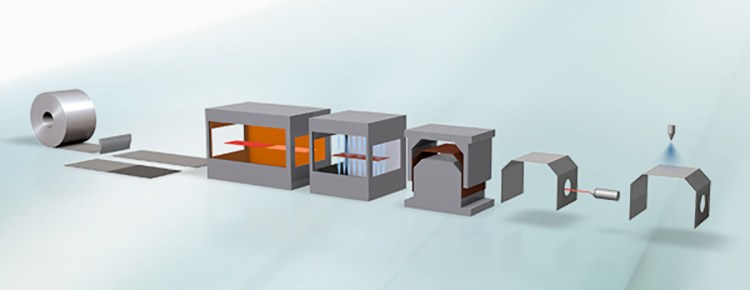Hot Vs Cold Roll Forming – which to choose? One important part of the work of an engineer is to choose the right material for their application.
There are already many types of metals to choose from. Each with its advantages and uses. Some types of steel make an excellent fit for household appliances, gas tanks, construction, others for the automotive industry or sea, etc.
Still, there is one more difference to make. The material class with the same chemical composition may have various qualities depending on the manufacturing method.
Hot Roll Forming
Hot Roll Forming refers to high rolling steel above the recrystallization temperature to produce sheets or other forms.
This method is usually preferred in projects where the right form, dimensions, and steel tolerance are not fundamental.
Hot Roll Forming may have several distinctive traits such as:
• Round edges and corners
• Less predictable shape
• Scaled surface
Cold Roll Forming
Cold Roll Forming is a rolling steel process under the temperature of the recrystallization. It is achieved by cooling steel to a temperature where it is no longer flexible.
The metalwork process is suitable for smaller projects or products such as bars, strips, stems, and sheets. Cold rolling is an effective way to form steel products that require extraordinary durability and tolerance.
Cold Roll Forming may have several distinctive traits such as:
• Smooth surface
• Precise edges and corners
• Straightness
Cold Vs Hot Roll Forming
As mentioned above, the main difference between hot roll forming and cold roll forming is the temperature at which they are processed.
Hot roll forming is processed above the temperature of the material recursion; while cold roll forming under the temperature of the material recrystallization.
Beyond this quality, there are some facts disclosing the key differences between the two ingredients, including in connection with the following. look at here about hot Vs cold roll forming.
Surface quality: Hot roll forming tends to have raw edges and surfaces requiring decarburization or other treatments to prepare it for use in subsequent production operations.
On the other hand, cold roll forming generally has a shiny and smooth surface that allows it to be used in production operations.
Material hardness: The cold roll forming process produces steel with power and hardness much higher than steel produced by heat rolling processes.
Internal stress: The biggest material and violence resistance introduced by the cold roll forming process has greater internal constraints.
These constraints must be relieved before the material can be treated; otherwise, the final part or product may experience warping.
Bottom Lines
These two types of roll forming should not be confused with the technical specifications or notes used to classify steel by composition or physical characteristics. When evaluating roll forming options for a project, it is important to keep in mind that some materials will work better than others for convincing purposes.
Understanding what type of steel offers good properties for a given application can prevent excessive expenditures on raw materials and save time in the long term.
Watch Now: https://www.youtube.com/user/jsbjugmug
